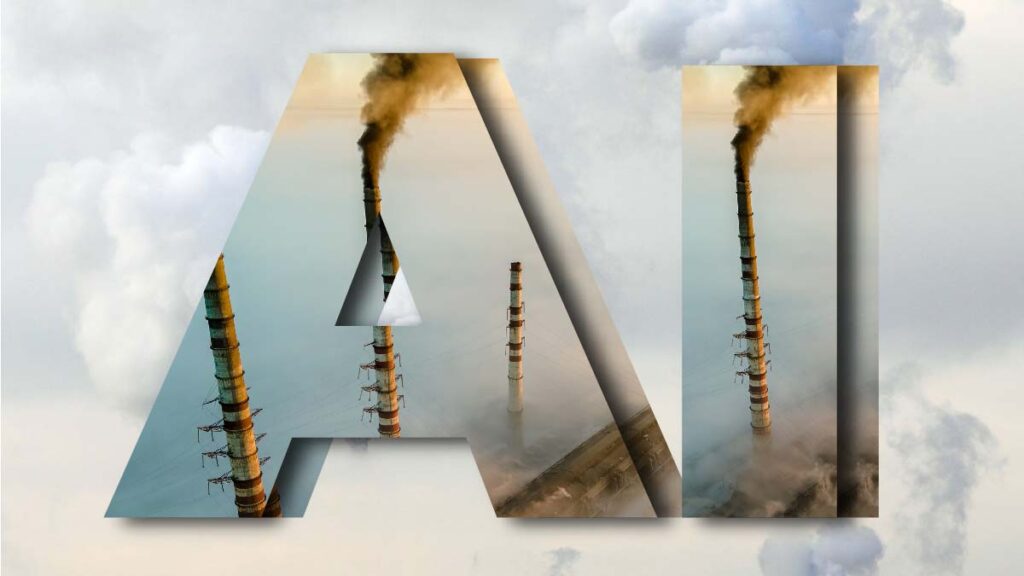
As the world ratifies its accelerated adoption of digital transformation, one worldly element is paying the price, the climate. The past couple of years recorded significant worries regarding some of the biggest tech companies’ data centers as their energy consumption mushrooms even further on a yearly basis. But while technology is detrimentally enlarging the devastating effect of climate change, one cannot establish that technology’s only effect on climate is a maleficent one. Technology has presented itself as the two-headed Washington quarter, with each side having an effect different from the other. While technology could be classified as one of the many reasons for accelerating climate change, it can also be classified as one that could halt back the harmful effect of this environmental metamorphosis, and Artificial Intelligence (AI) is one of the tools used to fight the global threat of global warming. So, what are the best uses of AI to reduce carbon emissions?
AI to Reduce Carbon Footprint
To start, when we talk about AI being used as a tool to minimize the hasty manifestation of climate change does not mean that the technology itself does not have a detrimental effect on the environment. The carbon footprint of AI is deemed one of the deriving factors hasting the growth of climate change. But in this case, you can look at AI as a part of the equation, where the problem could also be the solution or at least part of the solution.
The tech industry is being harshly scrutinized for not playing a more consequential role in fighting climate change, more specifically Big Tech companies, as their data centers are the ones that demand paramount energy consumption.
And those grounds came the much-needed implementation of AI to reduce carbon emissions immolating from the tech industry.
That being said, AI can play a much more prominent role in helping humanity fight climate change, despite being a part of the problem. As the world begins its long-due journey into sustainability, companies are increasing their use of AI climate change solutions.
AI Climate Change Solutions for Zero Carbon
The substantial effect of implementing AI climate change solutions into a company’s sustainability plan can have a remarkable role in dropping the undesirable impact of carbon footprint. Industries worldwide, and more accurately, the tech industry, is hastily deploying AI solutions to their roadmap to become more eco-friendly.
1. AI in Reducing Waste Management
Waste processing is a difficult task since the nature and quantity of waste vary according to seasons and areas. As a result, human employees’ predefined rules for gathering and processing garbage are frequently insufficient. Climate technology, such as intelligent garbage beans and Internet of Things sensors, can assist towns in adapting garbage collection routes and frequency.
2. AI Solutions for Transportation
To avoid traffic bottlenecks and natural disasters, the use of the Internet of Things (IoT) technology as one of the AI-driven solutions can help connect vehicles and permit a solid ground for communication with each other and the infrastructure. In conjunction with computer vision, AI can detect traffic patterns and generate intelligent route recommendations and, by doing so, increase each individual car’s carbon footprint. When implemented on a bigger scale, this could have an impressive and positive effect, might I add, in holding back the development of climate change.
3. AI Solutions for Electric Power
Thermal power plants, which generate electricity by burning coal and its derivatives, are the conventional way of electricity generation. Electricity AI technologies can help with renewable energy production and distribution, such as coordinating solar and wind energy via intelligent grids. By implementing suitable AI-powered approaches, companies can receive perceptions of their power usage. By merging efforts with clients from different countries, AI can make a massive volume of predictions by the minute. In this case, any AI-generated analysis of a company and their customer behavior in their energy consumption can highlight a fluctuating demand, which in return, would inform both parties to decrease their supply.
Inside Telecom provides you with an extensive list of content covering all aspects of the tech industry. Keep an eye on our AI section to stay informed and up-to-date with our daily articles.